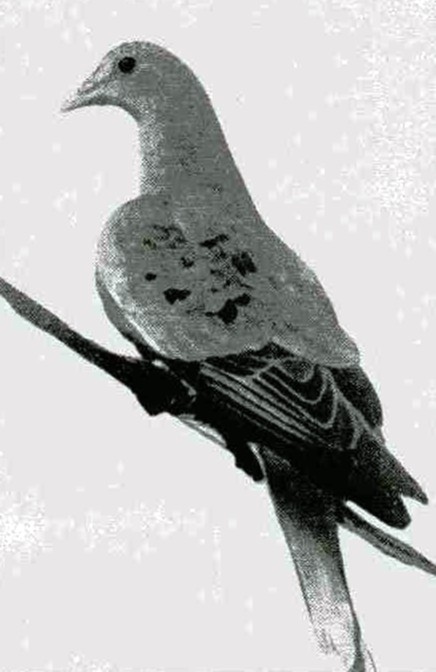|
| |
|
Extiction
The passenger pigeon (Ectopistes migratorius) officially went
extinct on September 1st, 1914 when the last known female
“Martha” died in the Cincinnati Zoo. During the 1880’s was when the decline of
the passenger pigeon was first noticed and some states made laws that
reduced trapper activity. These laws were hardly ever enforced. The
last wild pigeon was sighted in 1889 in Michigan. Despite efforts from
1910-1912, when large rewards were offered for sightings of wild
passenger pigeons, none were found. The passenger pigeon was extinct in
the wild they now only existed in captivity. The birds in captivity
were encouraged to breed but continued inbreeding caused production of
infertile eggs. The decline and disappearance of the passenger pigeon
was very rapid and the exact cause of their extinction is not completely
agreed upon. Most scientists agree it was a combination of factors.
Some of the factors include but are not limited to disease acquired from
exotic, imported pigeons, destruction of the great oak and beech
forests, over-hunting by humans, and ultimately death rates exceeding
birth rates causing colony sizes to decrease below a number needed for
the advantages of social nesting.
|

Citation:
Schorger, A. W. (1955). The passenger pigeon: Its
natural history and extinction. Madison: The University of Wisconsin
Press.
|
Conservation Issues
For the passenger pigeon (Ectopistes migratorius) the concern for
conservation came too late. The species that was once thought to be the
most abundant on earth with a conservative approximation of three
billion individuals making up 25-40% of the total bird population in the
United States were reduced to nothing only after 300 years of the
presence of the white man on the continent. The passenger pigeon
represents the reality that having a large number of individuals does
not mean that the species is in “good” status, many other aspects need
to be taken into account when making decisions concerning conservation.
|
Next
Page
|



